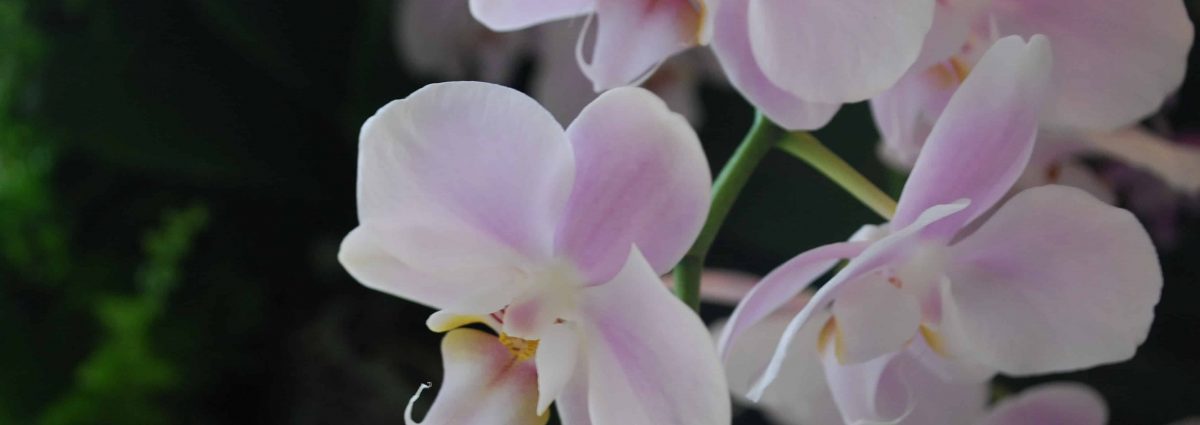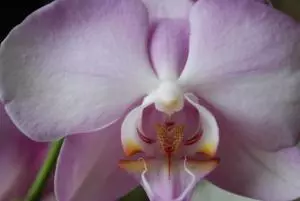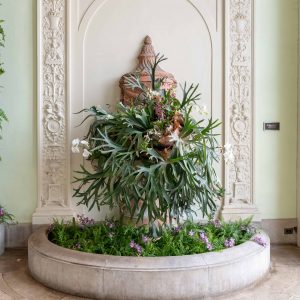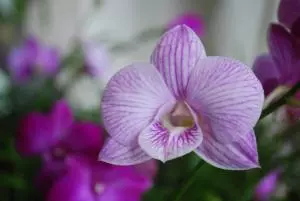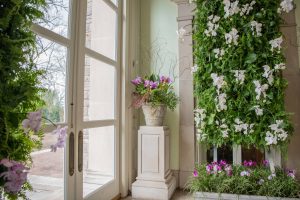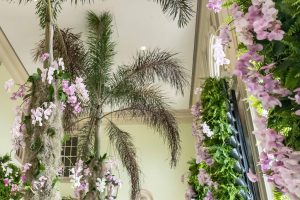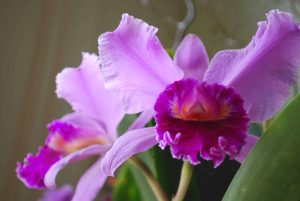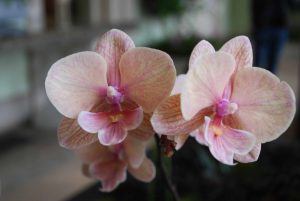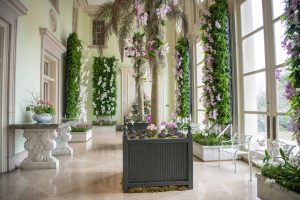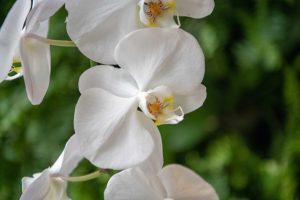Bringing Nature Indoors

Have these cold winter months been keeping you down? We have created our own tropical paradise inside the Cheekwood Mansion to beat the winter blues. This limited time engagement features a stylized interpretation of a classical orangery and occupies the historic loggia with large palms, tropical foliage, and an array of colorful orchids. Orchids are also displayed throughout the historically redecorated mansion, and present a series of period room interventions to explore how the Cheek family likely brought nature indoors and decorated their home.
Turning the Loggia into a Tropical Paradise
 Boston Ferns adorn seven green wall panels surrounding the Loggia. These panels are intermittently sprinkled with pink Phalaenopsis and white Phalaenopsis to make the perfect backdrop for an Instagram-worthy selfie. Lemon Drop Ferns fill planters at the base of the orchid and Boston Fern-infused panels. Among the Lemon Drop Ferns are Dendrobium orchids in whites and purples. Foxtail Palms grace the center of the room in a groundcover of red ivy, with Pink phalaenopsis and oncidiums cascading from the weeping spanish moss on their trunks. Rich pink Cattleya orchids are nestled in beds of curly willow and nandina stand stately on display, along with Lady Slippers and miniature phalaenopsis rich in hues of yellows, mauves, and pinks. It took approximately three days to set up this display. This included loading in two 20-foot-tall palms, setting up the panels, and adding the plant material.
Boston Ferns adorn seven green wall panels surrounding the Loggia. These panels are intermittently sprinkled with pink Phalaenopsis and white Phalaenopsis to make the perfect backdrop for an Instagram-worthy selfie. Lemon Drop Ferns fill planters at the base of the orchid and Boston Fern-infused panels. Among the Lemon Drop Ferns are Dendrobium orchids in whites and purples. Foxtail Palms grace the center of the room in a groundcover of red ivy, with Pink phalaenopsis and oncidiums cascading from the weeping spanish moss on their trunks. Rich pink Cattleya orchids are nestled in beds of curly willow and nandina stand stately on display, along with Lady Slippers and miniature phalaenopsis rich in hues of yellows, mauves, and pinks. It took approximately three days to set up this display. This included loading in two 20-foot-tall palms, setting up the panels, and adding the plant material.
How many plants were used in this exhibition?

– Around 1,865 plants total
– Over 1,000 Boston Ferns
– 150 pink Phalaenopsis
– 200 white Phalaenopsis
– Nearly 100 Lemon Drop Ferns
– 200 Dendrobium orchids
– 2 20-foot-tall Foxtail Palms
Orchid Growing Tips

Does caring for orchids of your own intimidate you? Have no fear! Phalaenopsis, commonly called moth orchid, are one of the easiest to grow, and will provide months of colorful enjoyment. They prefer low light settings, east windows, and typically only need watering once a week – preferably in the morning. Once the blooms are spent, cut the spike down to leaf level, and it will bloom again within a year. Dendrobiums on the other hand prefer lots of light but not direct sun. Paphiopedilum and Lady Slippers like to be watered a couple of times a week. There are plenty of resources available to guide you through orchid care. For more information, visit the American Orchid Society.
Sponsored By 
Additional support provided by Mrs. Kate R. W. Grayken and Heloise Werthan Kuhn
